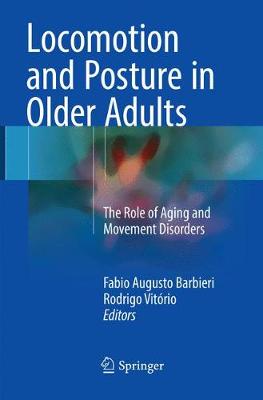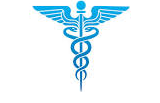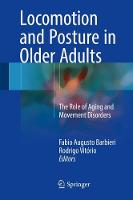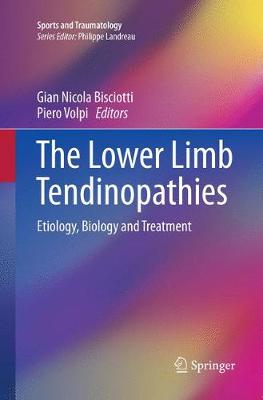Locomotion and Posture in Older Adults
 -15%
portes grátis
-15%
portes grátis
Locomotion and Posture in Older Adults
The Role of Aging and Movement Disorders
Barbieri, Fabio Augusto; Vitorio, Rodrigo
Springer International Publishing AG
05/2018
457
Mole
Inglês
9783319840604
15 a 20 dias
972
Descrição não disponível.
Part I. Background concepts to motor control in aging and movement disorders.- Chapter 1. Complex systems approach to the study of posture and locomotion in older people.- Chapter 2. Clinical aspects of movement disorders: effects on walking and posture.- Chapter 3. Neuropsychological aspects of movement disorders.- Part II. Walking.- Chapter 4. Stability on walking in neurological healthy individuals.- Chapter 5. Visual control of adaptive locomotion and changes due to natural ageing. - Chapter 6. The walking ability in healthy older adults: The role of aging and physical activity and its interface with agility, balance, cognition and risk of falls.- Chapter 7. Cognition, gait disorders and fall risk in healthy neurological older individuals.- Chapter 8. Visual control of locomotion in people with Parkinson's disease.- Chapter 9. Gait disturbances in movement disorders: a motor-cognitive problem.- Chapter 10. The influence of muscle fatigue on walking during aging and in individuals with movement disorders.- Chapter 11. Parkinson disease and gait asymmetry.- Chapter 12. Effects of physical activity on walking in individuals with movement disorders.- Part III. Posture.- Chapter 13. Older adults are incapable of changing sensory-motor coupling during upright stance with visual manipulation and different attentional demands.- Chapter 14. Contribution of fingertip light touch on postural stabilization of older adults.- Chapter 15. Effects of vision on postural control in neurological healthy individuals. Chapter 16. Balance control in older adults.- Chapter 17. Association between fall risk and postural instability in the elderly.- Chapter 18. Exercise to maximize postural control and reduce the risk of falls in older age.- Chapter 19. The role of aging and movement disorders on postural control asymmetry.- Chapter 20. Postural control and somatosensory information: effects of aging and Parkinson's disease.- Chapter 21. Exercise and balance in older adults withmovement disorders.- Part IV. Technology and rehabilitation applied to locomotion and posture.- Chapter 22. Gait initiation in the elderly: concepts, clinical implications and methodology.- Chapter 23. Contribution of virtual reality (Nintendo WII) for exercise training and rehabilitation.- Chapter 24. Deep brain stimulation in Parkinson's disease: effects on gait and postural control.- Chapter 25. Using virtual reality to advance the understanding and rehabilitation of gait impairments in Parkinson's disease.- Chapter 26. The applicability of inertial motion sensors for locomotion and posture.- Chapter 27. Age-related changes in the neural control of standing balance.
Este título pertence ao(s) assunto(s) indicados(s). Para ver outros títulos clique no assunto desejado.
Motor control;Movement disorders;Aging;Rehabilitation;Elderly;Movement;Gait;Parkinson;rehabilitation psychology
Part I. Background concepts to motor control in aging and movement disorders.- Chapter 1. Complex systems approach to the study of posture and locomotion in older people.- Chapter 2. Clinical aspects of movement disorders: effects on walking and posture.- Chapter 3. Neuropsychological aspects of movement disorders.- Part II. Walking.- Chapter 4. Stability on walking in neurological healthy individuals.- Chapter 5. Visual control of adaptive locomotion and changes due to natural ageing. - Chapter 6. The walking ability in healthy older adults: The role of aging and physical activity and its interface with agility, balance, cognition and risk of falls.- Chapter 7. Cognition, gait disorders and fall risk in healthy neurological older individuals.- Chapter 8. Visual control of locomotion in people with Parkinson's disease.- Chapter 9. Gait disturbances in movement disorders: a motor-cognitive problem.- Chapter 10. The influence of muscle fatigue on walking during aging and in individuals with movement disorders.- Chapter 11. Parkinson disease and gait asymmetry.- Chapter 12. Effects of physical activity on walking in individuals with movement disorders.- Part III. Posture.- Chapter 13. Older adults are incapable of changing sensory-motor coupling during upright stance with visual manipulation and different attentional demands.- Chapter 14. Contribution of fingertip light touch on postural stabilization of older adults.- Chapter 15. Effects of vision on postural control in neurological healthy individuals. Chapter 16. Balance control in older adults.- Chapter 17. Association between fall risk and postural instability in the elderly.- Chapter 18. Exercise to maximize postural control and reduce the risk of falls in older age.- Chapter 19. The role of aging and movement disorders on postural control asymmetry.- Chapter 20. Postural control and somatosensory information: effects of aging and Parkinson's disease.- Chapter 21. Exercise and balance in older adults withmovement disorders.- Part IV. Technology and rehabilitation applied to locomotion and posture.- Chapter 22. Gait initiation in the elderly: concepts, clinical implications and methodology.- Chapter 23. Contribution of virtual reality (Nintendo WII) for exercise training and rehabilitation.- Chapter 24. Deep brain stimulation in Parkinson's disease: effects on gait and postural control.- Chapter 25. Using virtual reality to advance the understanding and rehabilitation of gait impairments in Parkinson's disease.- Chapter 26. The applicability of inertial motion sensors for locomotion and posture.- Chapter 27. Age-related changes in the neural control of standing balance.
Este título pertence ao(s) assunto(s) indicados(s). Para ver outros títulos clique no assunto desejado.







